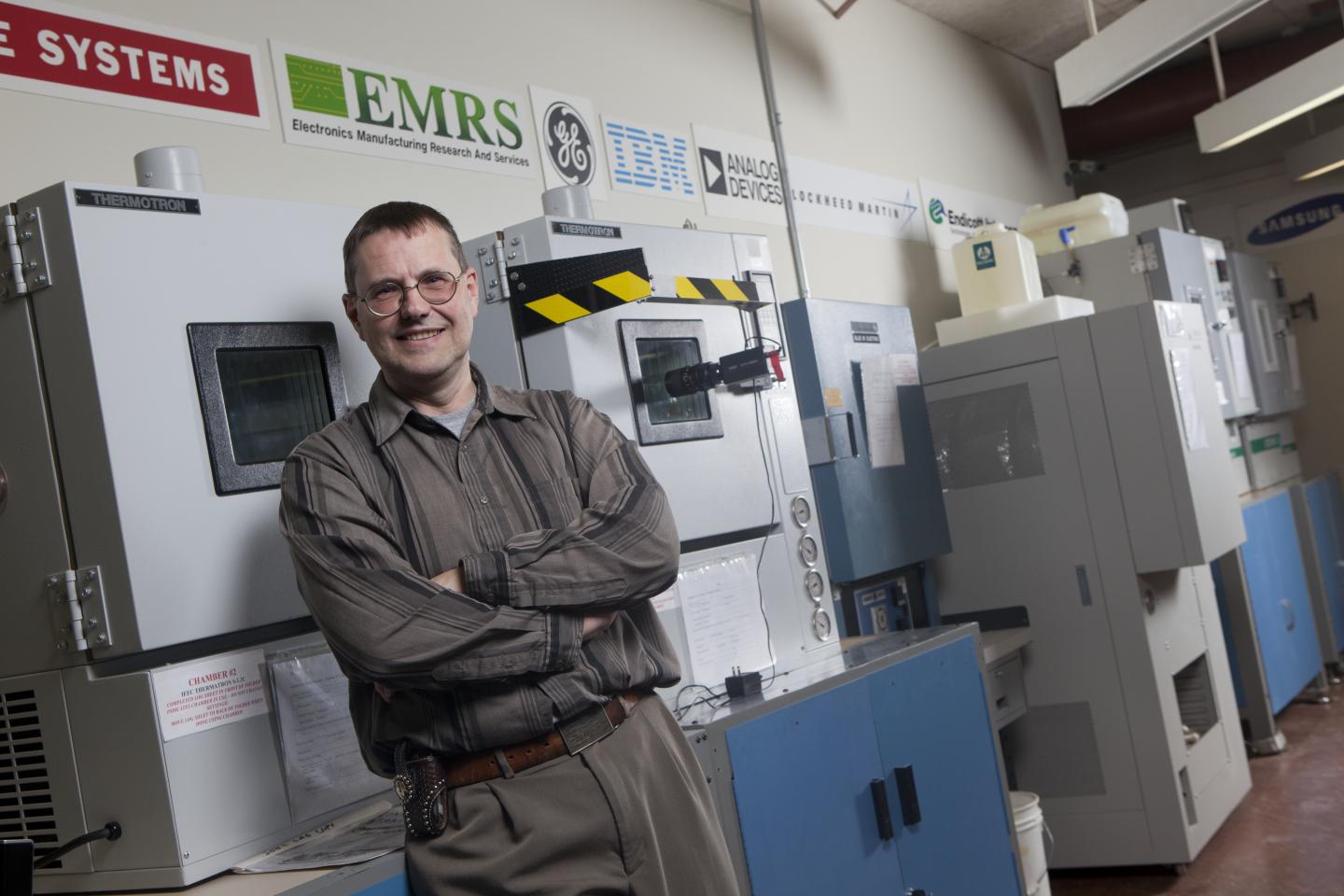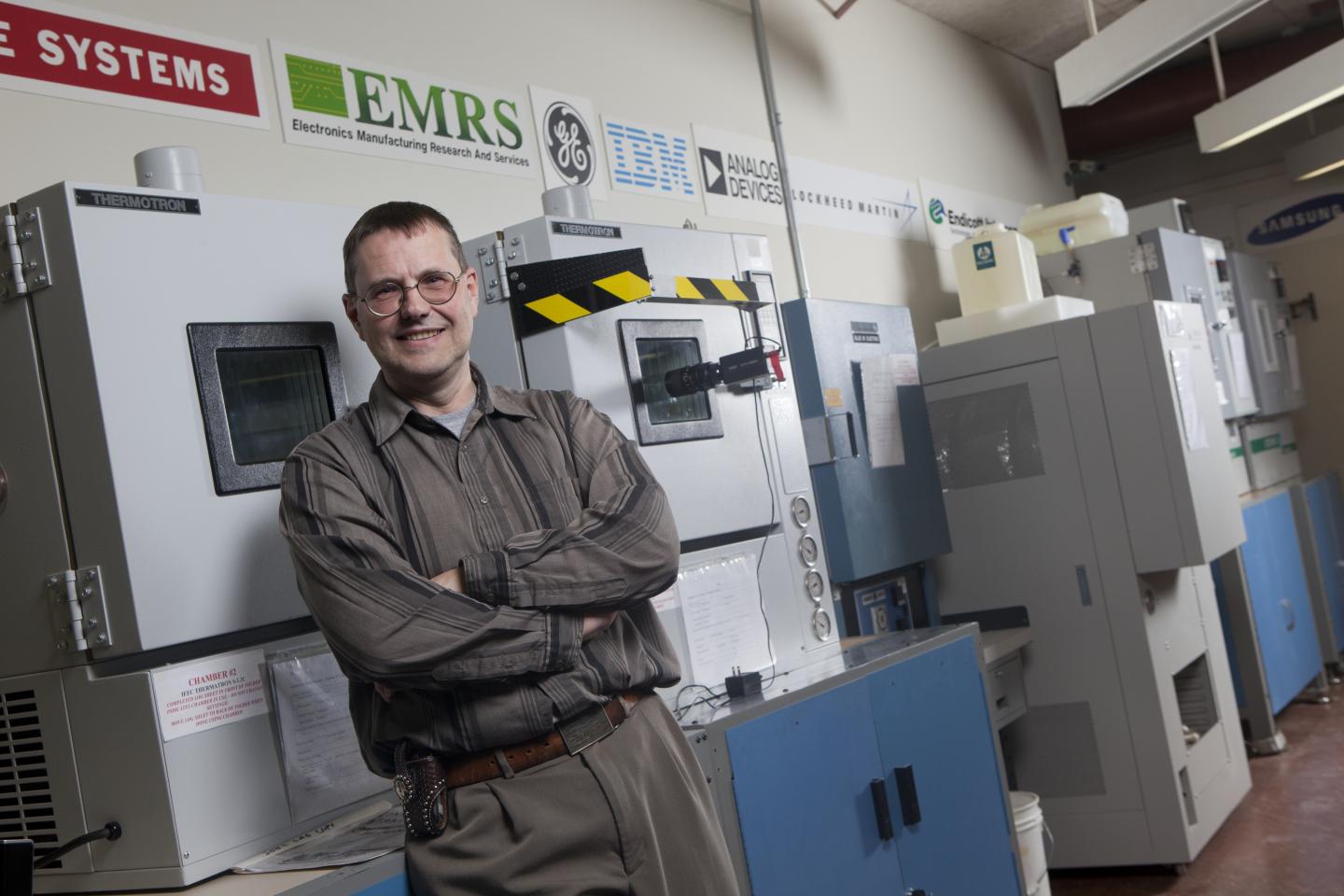
Credit: Jonathan Cohen/Binghamton University
BINGHAMTON, NY – While investigating mass transit accidents, especially in air travel, National Transportation Safety Board (NTSB) officials often rely on digital clues left behind in flash memories of any and all electronic devices — both personal and professional — at a crash site. With the physical forces and high-temperature fires associated with many crashes, memory units are often damaged and sometimes unreadable.
Researchers at Binghamton University, State University of New York have figured out how much damage memory units can sustain before becoming unreadable and new repair techniques to retrieve clues off of damaged units, which might help prevent future tragedies.
"The biggest surprise was how much punishment these devices can take before ceasing to function," said Steve Cain, who is the project manager and a senior research support specialist in the Integrated Electronics Engineering Center (IEEC) at Binghamton University. "As part of their post-crash investigations, the NTSB collects anything and everything at the scene, including personal electronic devices. If the device was active during or just before the crash, it is possible that the data stored in the memory can provide clues as to the cause of the crash. Most of the time the device is ruined, but sometimes it is intact."
The interdisciplinary Binghamton group of Cain, Preeth Sivakumar, Jack Lombardi, and Mark Poliks along with James Cash, Joseph Gregor, and Michael Budinski from the NTSB, presented "Fire Damage and Repair Techniques for Flash Memory Modules: Implication for Post-Crash Investigations" at the Fall 2016 International Symposium of Microelectronics.
Scientists found plastic coverings started to break down after three hours of exposure to temperatures of 300 degrees Celsius, or about 572 degrees Fahrenheit or more, but memory chips were still readable.
Researchers pointed out that even with the pressures and forces in play during past crashes, temperatures typically only reach those levels for short periods of time.
"Data integrity was maintained even in a plasma discharge," Cain said. "Basically, if the device doesn't burn up, there is a reasonable chance of the data being retained in the chip. The only problem is that the connections to the memory chips may be broken, so that the data cannot be read."
For the second part of the study, researchers addressed the readability issue. The team purposely damaged memory units and then extracted memory chips using acid, lasers, plasma, or mechanical polishing.
Lasers were the most effective extraction method and mechanical extractions was the simplest, but each method still damaged the wire bonds within memory chips and made many unreadable. A specialized metallic ink from a precision printer was used to restore functionality.
"These results expand the investigative scope for aviation accidents, where the data rather than the device is of paramount importance," the team concluded. "It is possible to repair the interconnections of flash memory modules, provided the chip is intact."
###
Media Contact
Steve Cain
[email protected]
607-777-5467
@binghamtonu
http://www.binghamton.edu
############
Story Source: Materials provided by Scienmag





